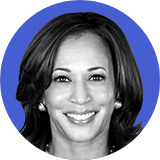At 60, Ms Harris is more than two decades younger than Joe Biden, whom she replaced as the Democratic nominee. Her mother was an endocrinologist born in India; her father is an economist born in Jamaica. In California she won elections as a prosecutor by leaning to the right on criminal-justice issues, while also appealing to Democrats, and was elected as the state’s attorney-general in 2010. Since she came to Washington, first as a senator in 2017, Ms Harris has been most effective at debates and hearings, where her skills as a litigator are on display.
She is a creature of institutional politics, not a visionary or an ideologue, and has struggled to define herself on a national stage. Her presidential run in 2020 crashed badly. As vice-president she is tied to the Biden administration’s record, which is unpopular despite the major legislation it passed to onshore chip manufacturing and invest in green energy. If she is to beat Mr Trump she will need to answer his attack lines on immigration directly and lay out a more ambitious domestic policy agenda than Mr Biden was able to communicate.



